Our Curriculum
We use Experience Curriculum as our foundation, enhancing it with additional programs designed to support every child’s growth. Our Director has developed a unique linguistics-based curriculum that nurtures early reading and writing skills. We also incorporate engaging, hands-on STEM extensions created in-house to spark curiosity and build a strong foundation for Kindergarten and beyond.
Our Classroom
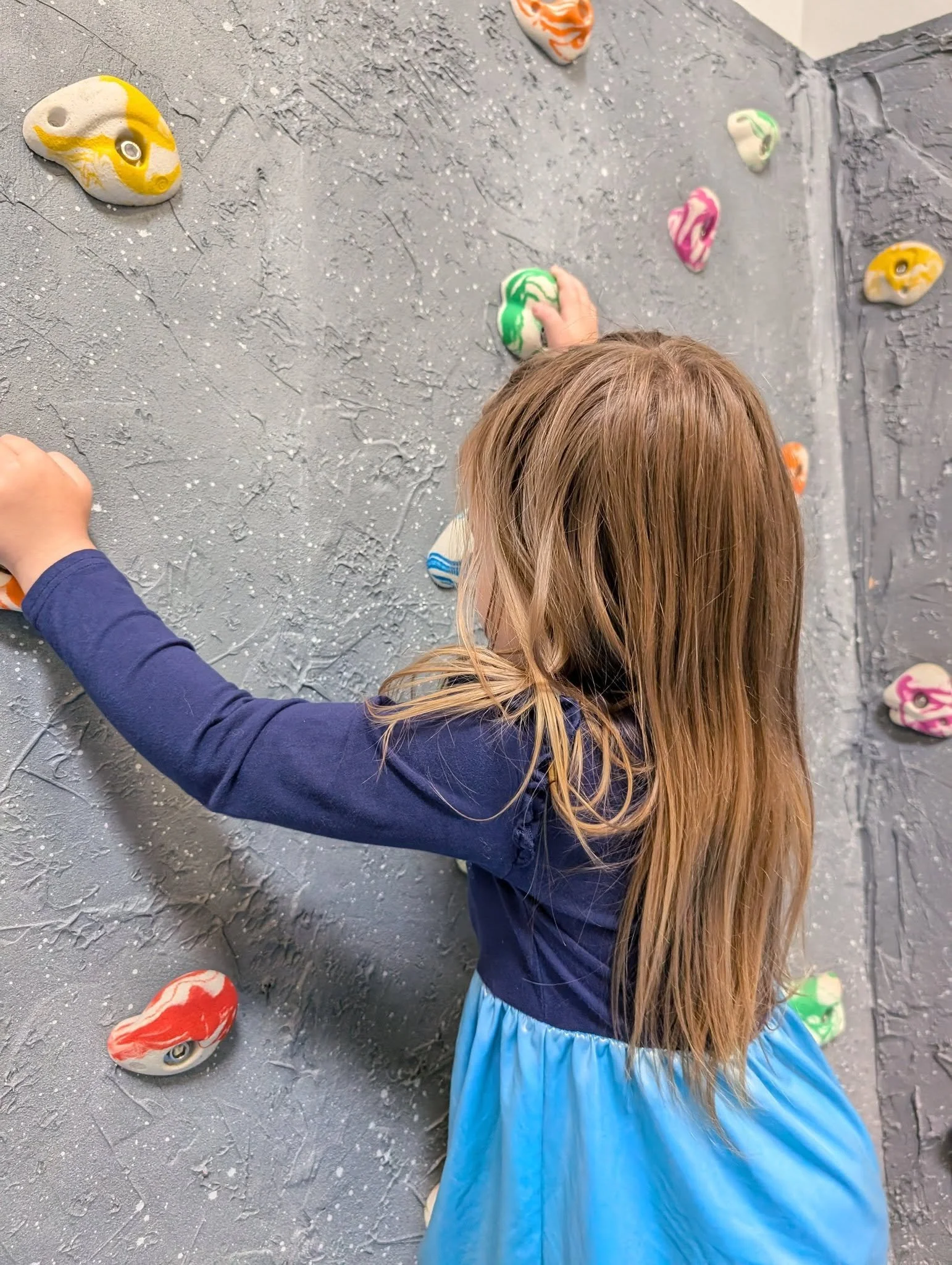
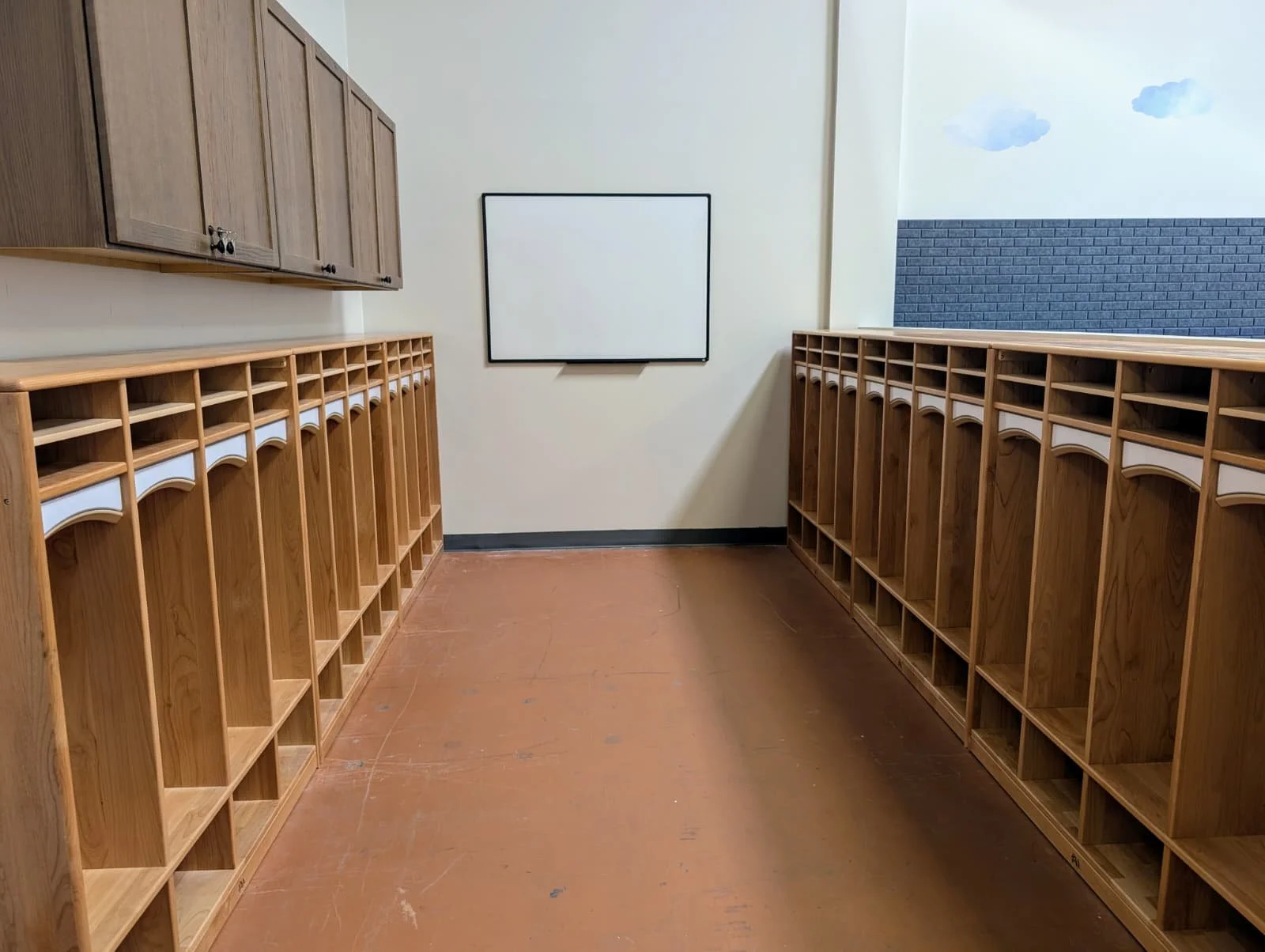
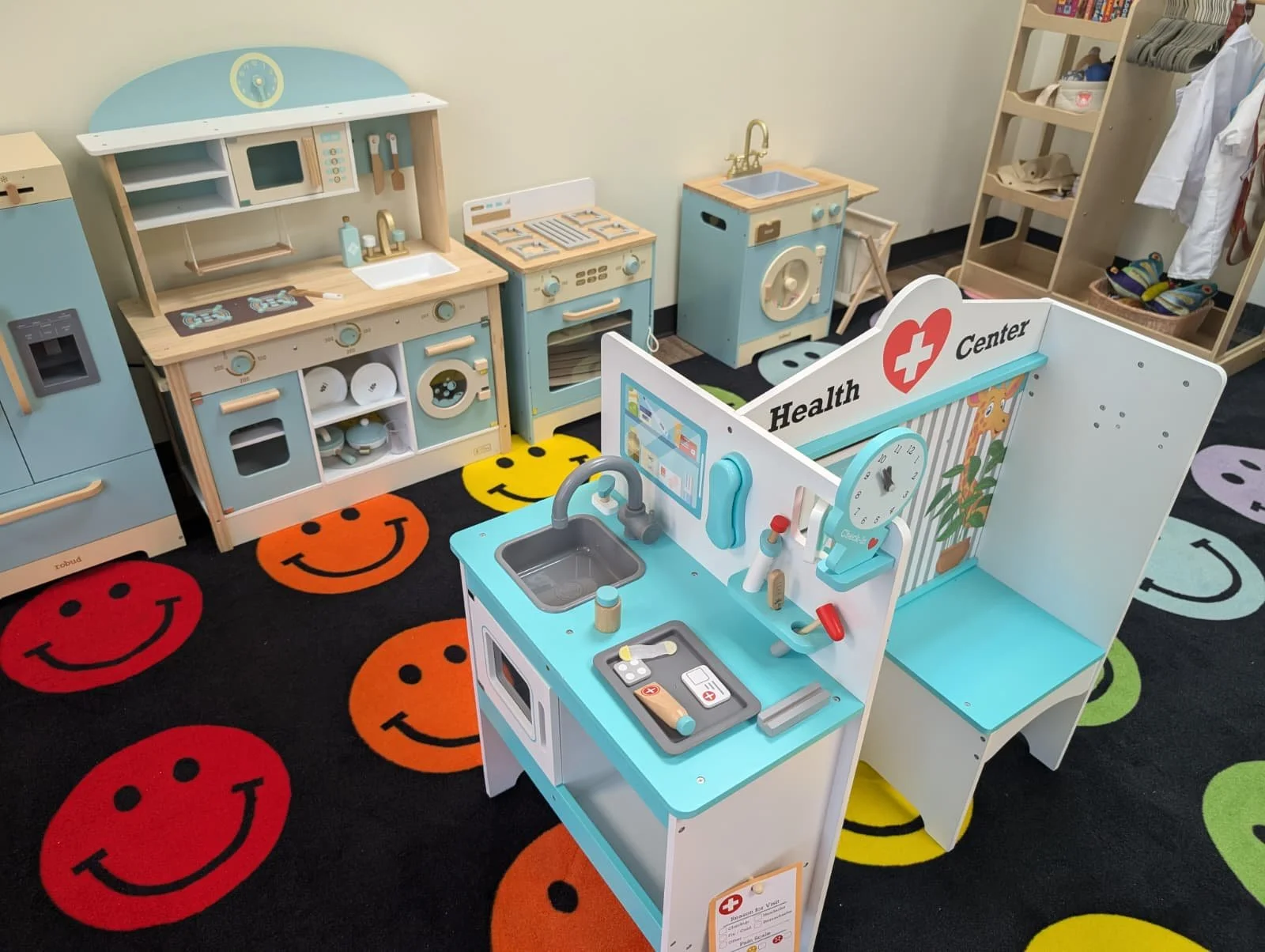
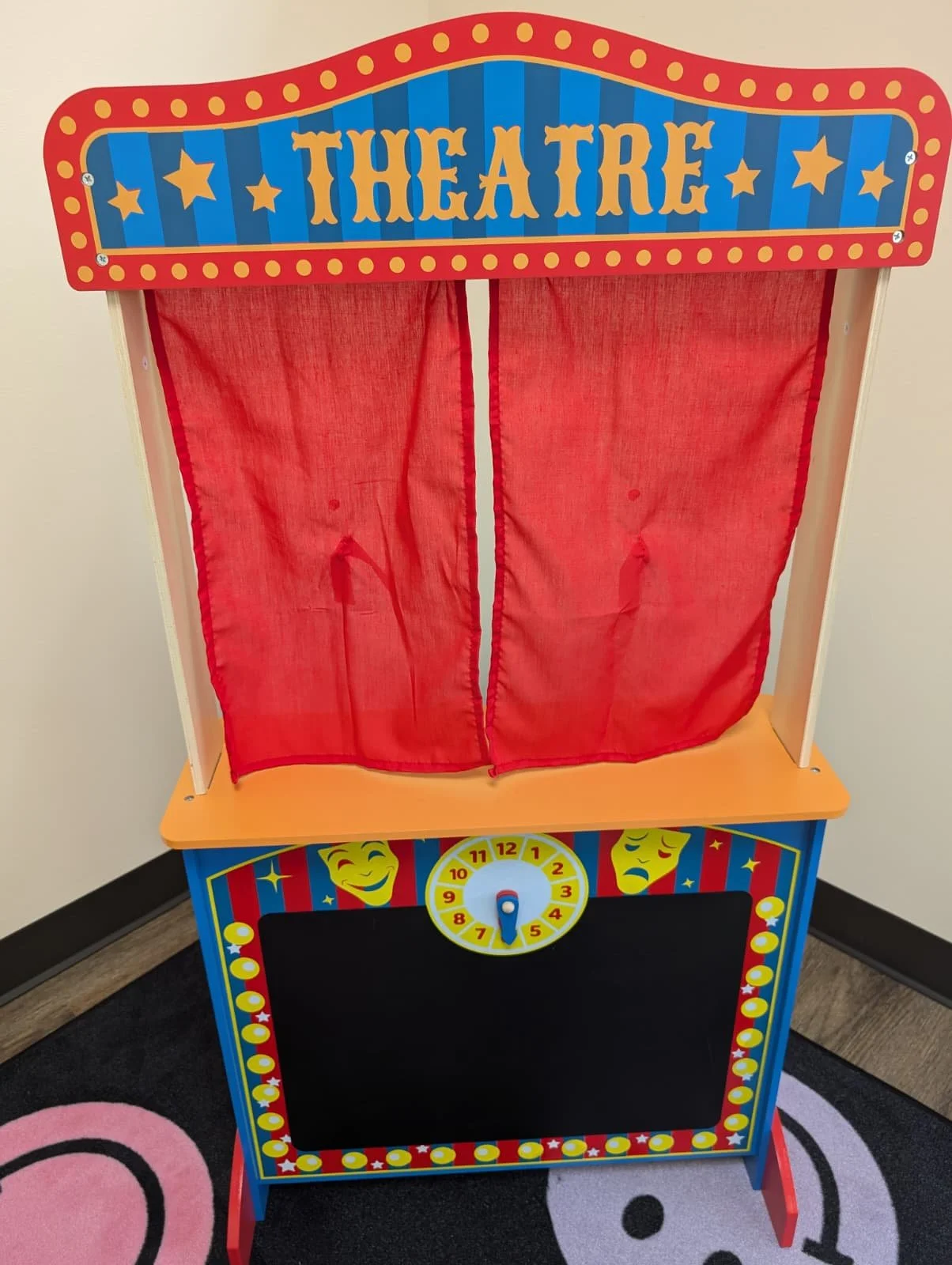
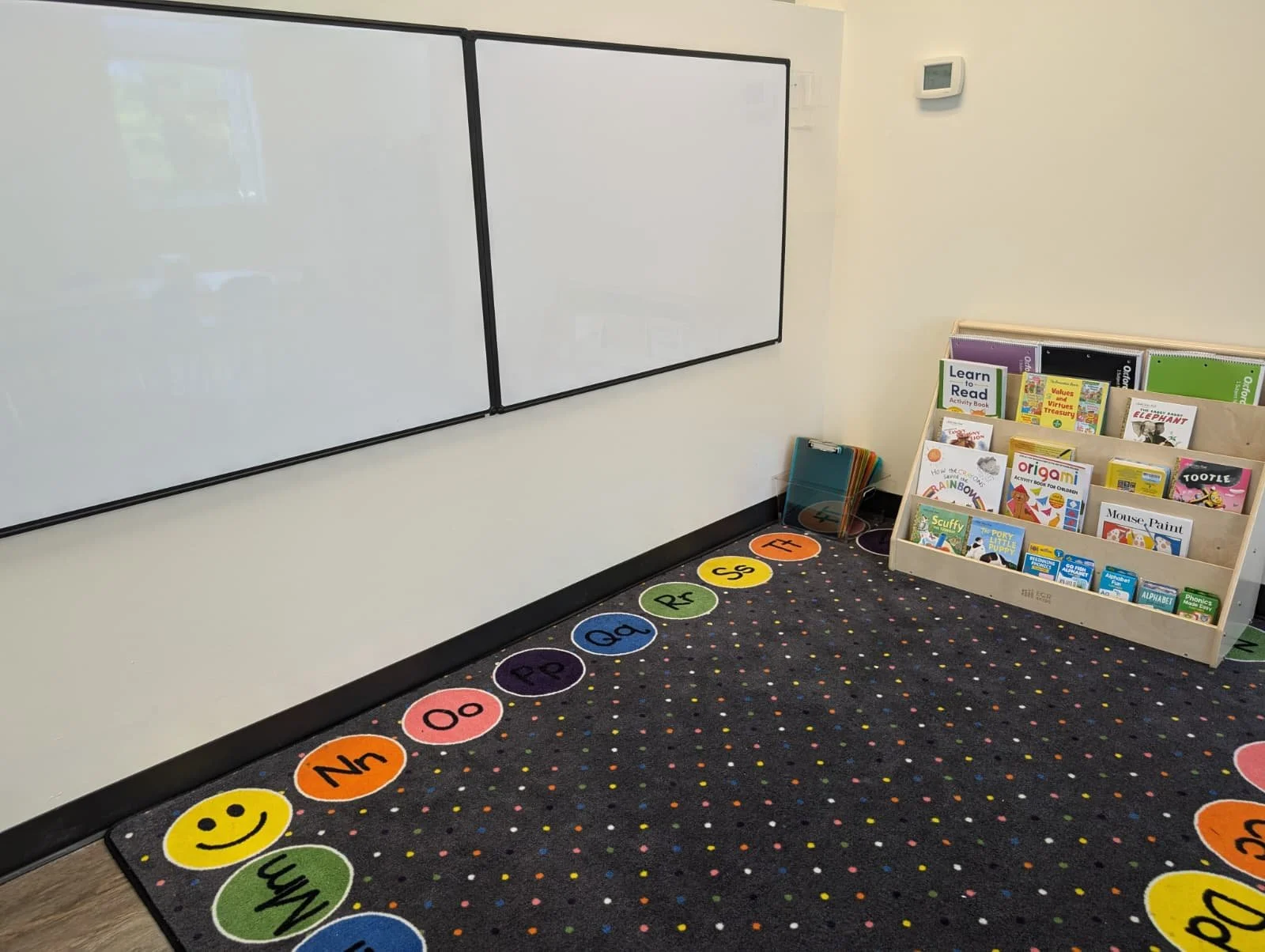
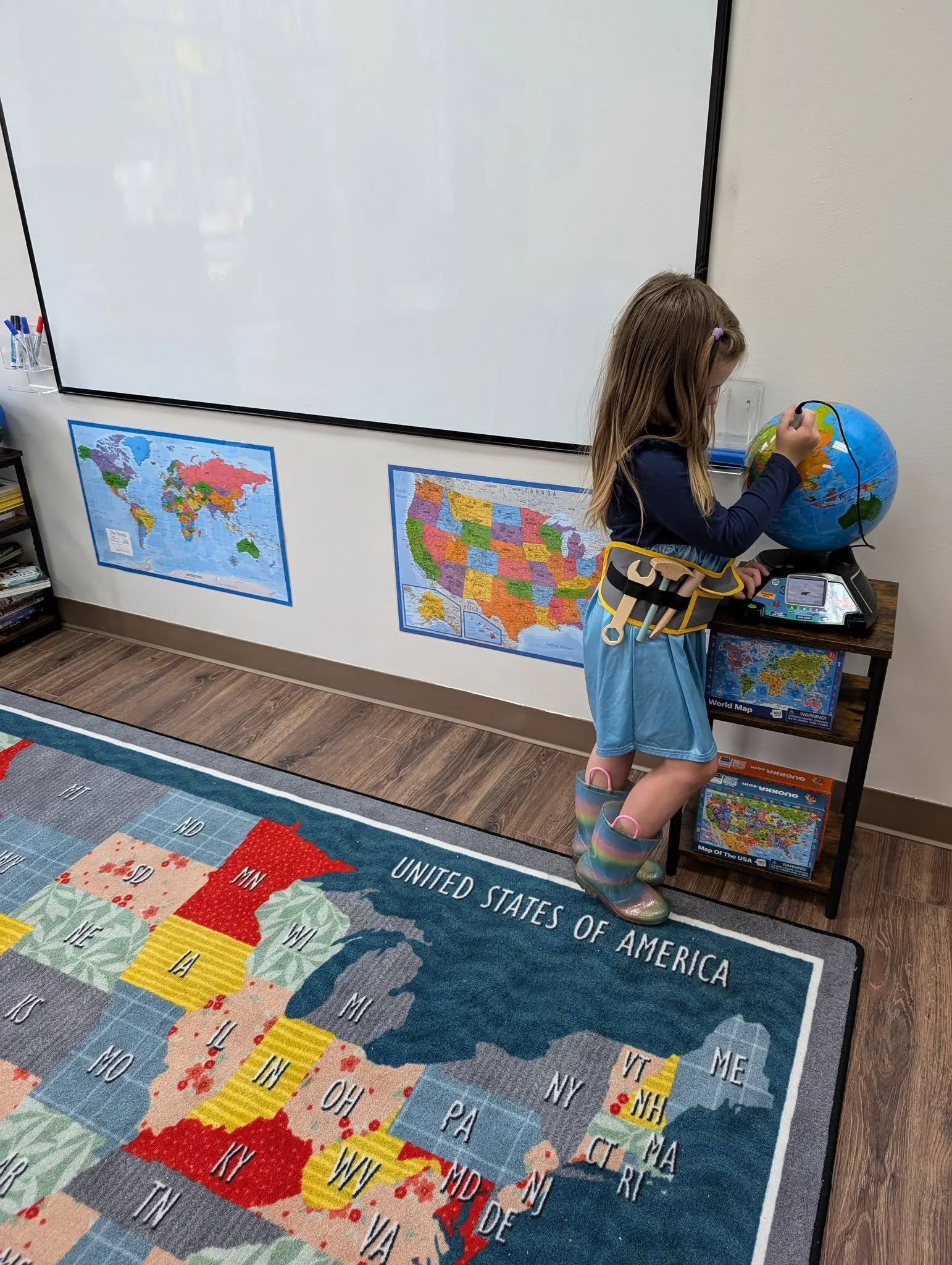
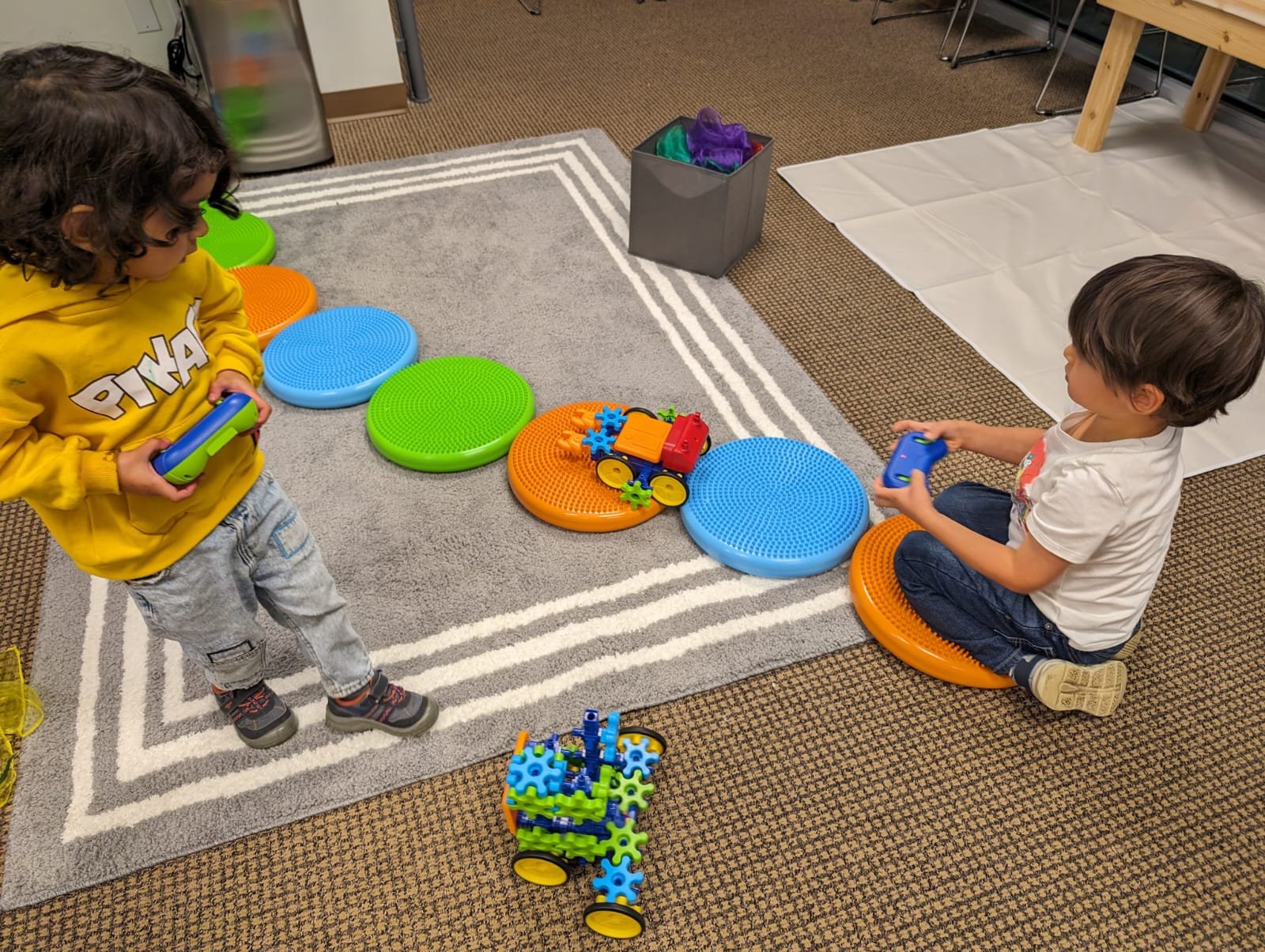
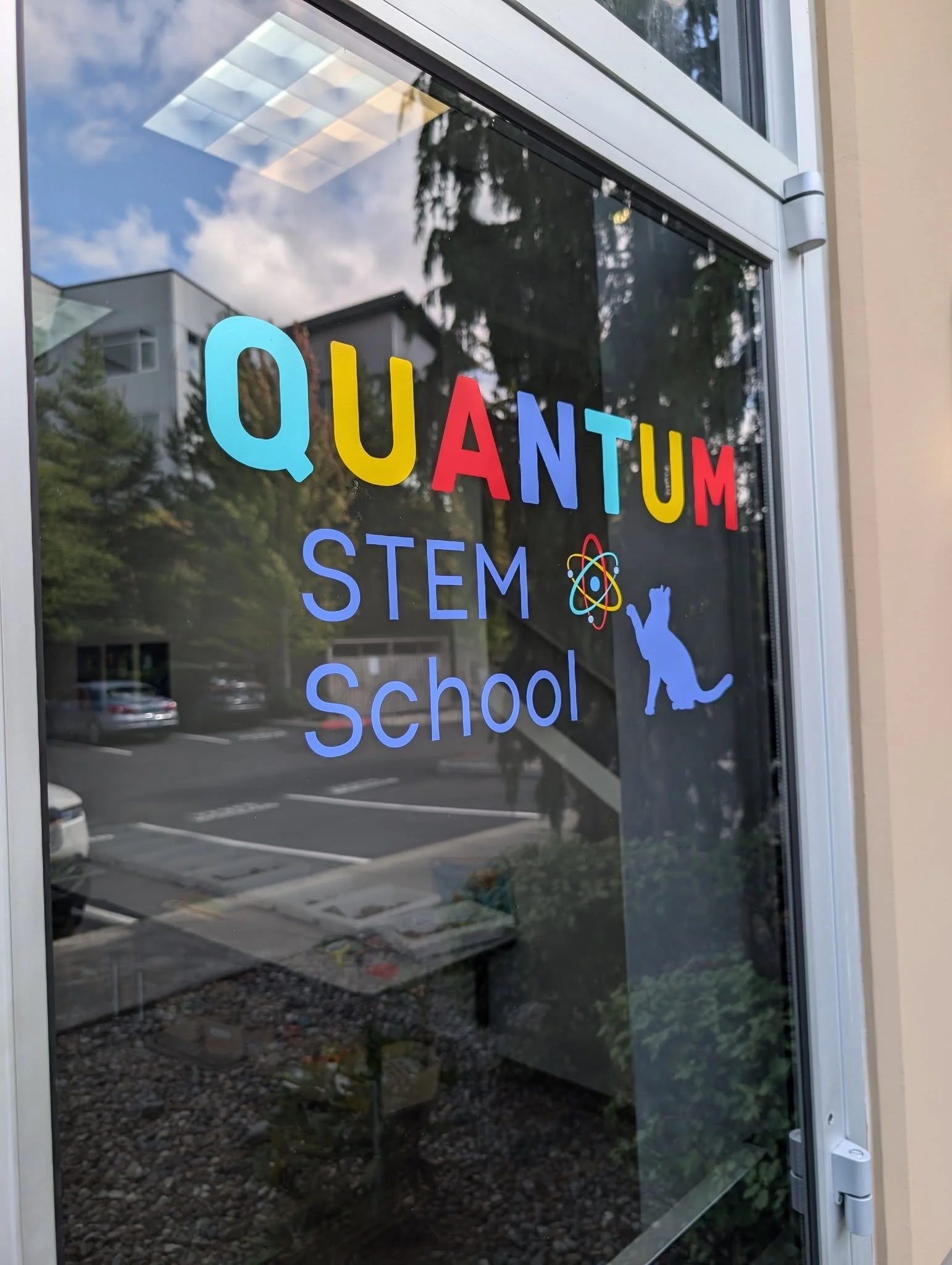


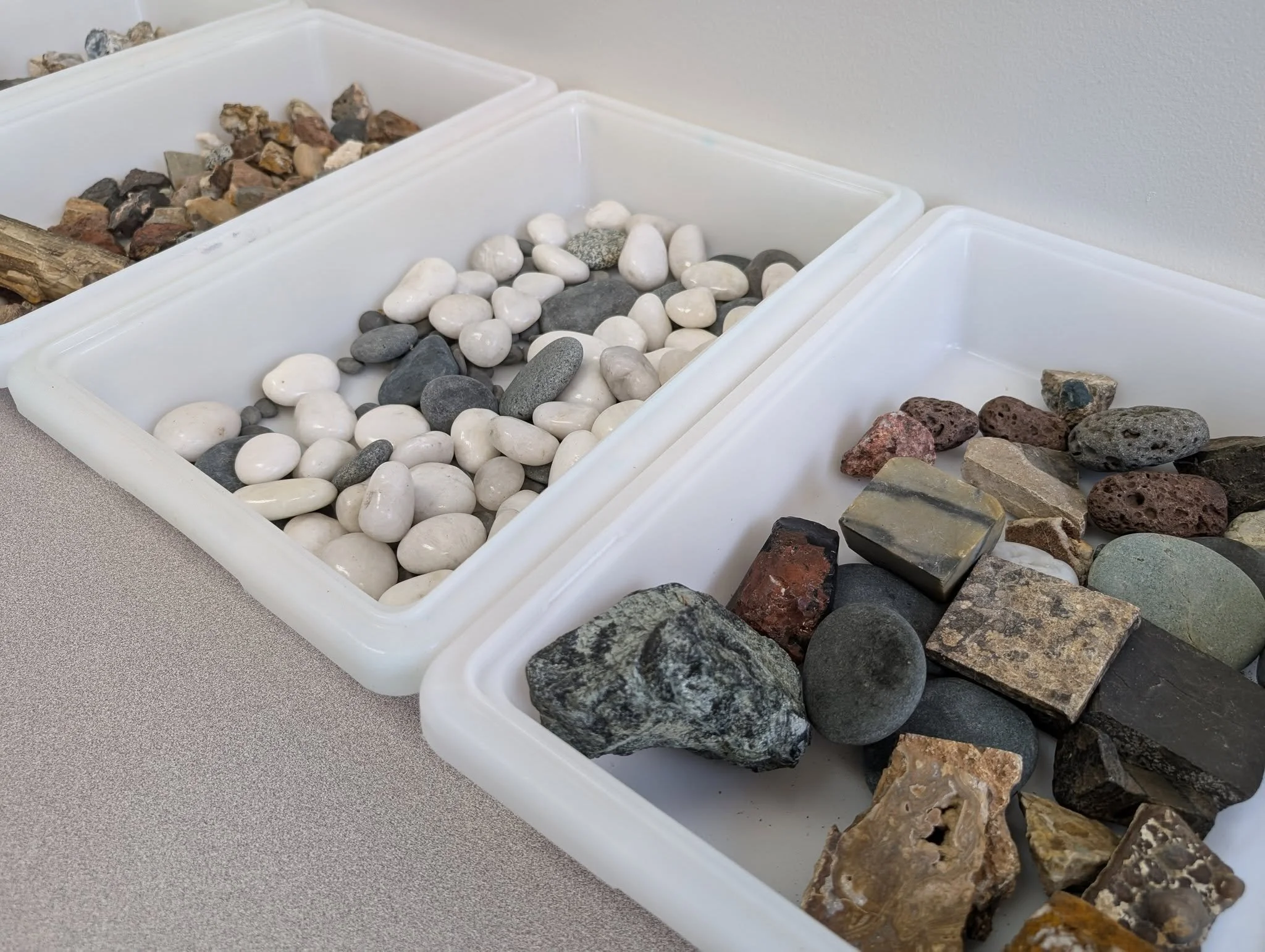

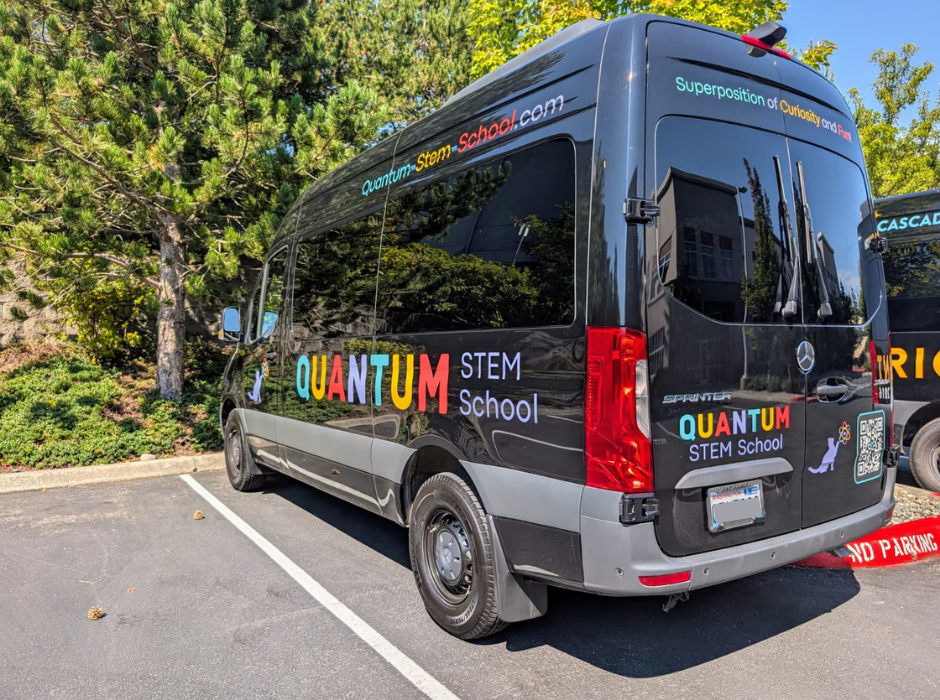
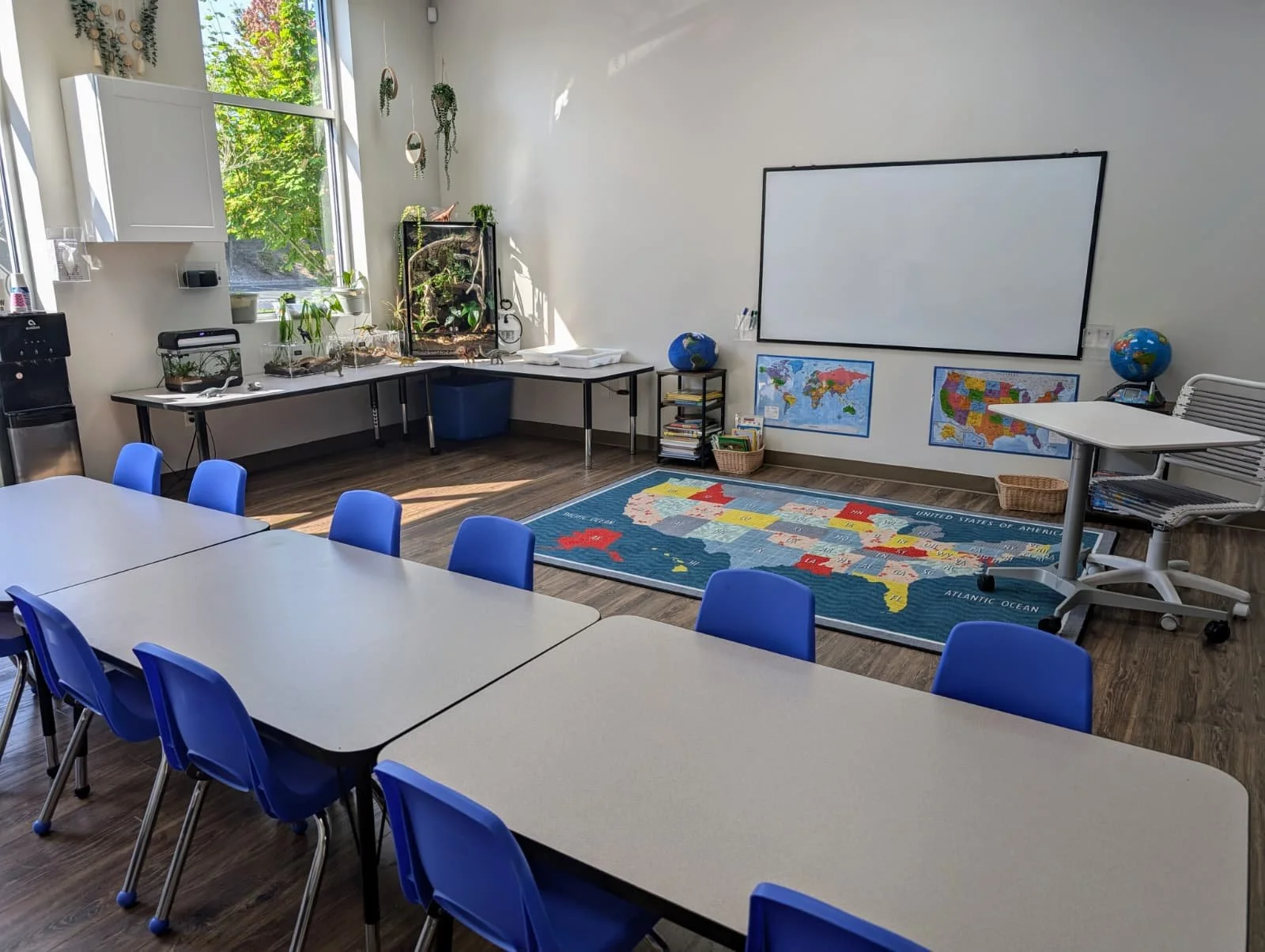

Read more about how we incorporate STEAM, Literacy, and Movement into our educational day
-
We provide students with engaging, hands-on science experiences integrated throughout the school day. Each lesson is designed to spark curiosity and build understanding through interactive exploration. Here are some examples of the activities students will enjoy:
Chemistry: Students explore chemical reactions through safe, age-appropriate experiments such as erupting a volcano with baking soda and vinegar or inflating balloons using simple chemical reactions.
Biology: Students grow plants from seedlings, track their development, and observe plant cells under a microscope—building a strong foundation in life sciences. They’ll also explore animal life by examining insects or pond organisms under microscopes and observing the transformation of caterpillars into butterflies.
Physics: Students investigate core physics concepts with hands-on activities like sink-or-float experiments to explore buoyancy, experimenting with ramps to observe how objects move at different speeds, and building colorful fluid density towers to understand mass and volume.
We also explore even more exciting branches of science, including earth science, astronomy, engineering, environmental science, geology, and meteorology—keeping curiosity alive and learning fun every step of the way!
-
We offer students hands-on technology experiences that foster creativity, problem-solving, and foundational tech skills. Throughout the school day, students will explore:
Electricity: Students build simple circuits using snap circuit kits, safely experimenting with different designs and components.
Robotics: Using age-appropriate, reconfigurable robots and remote-control devices, students investigate movement, patterns, and design. Through playful experimentation, they begin to understand sequencing and how technology responds to input.
Coding Concepts: Even without screens, students build coding readiness through activities like directional games, simple logic puzzles, and robot-based challenges (“Make the robot go forward, turn, then stop!”). These build skills like pattern recognition, problem-solving, and spatial awareness.
-
We provide students with hands-on engineering opportunities throughout the school day, encouraging creativity, problem-solving, and real-world thinking through open-ended design challenges.
Building: Students experiment with various materials to design and construct models. They'll build and test bridges, towers, and other structures to explore strength, stability, and balance—all while learning fundamental concepts in structural engineering.
Simple Machines: Students explore how levers, pulleys, wheels, and inclined planes work through guided building projects that show how force and motion interact.
Engineering Challenges: Using everyday materials like paper, tape, straws, and cups, students will tackle fun design tasks—such as creating the tallest free-standing tower, building a boat that floats, or designing a parachute that slows descent.
LEGO® Engineering: Students use LEGO bricks and kits to explore design, motion, and construction in an accessible, creative format.
These activities promote critical thinking, collaboration, and hands-on learning, giving students a strong foundation in how things are designed, built, and improved.
-
Our math curriculum follows Washington State Standards and is tailored to meet each student's individual learning level. Instruction is differentiated to ensure all students are supported and appropriately challenged. While some students work in small groups with a teacher, others engage in independent learning stations led by an instructor—fostering both collaboration and independent problem-solving skills.
Students engage in a wide range of math activities, including:
Hands-On Math: Using manipulatives like counting cubes, pattern blocks, and number lines to explore foundational concepts such as number sense, place value, and basic operations.
Math Games & Centers: Reinforcing skills through board games, card games, and hands-on challenges that make learning fun and engaging.
Applied Math & Measurement: Exploring real-world applications like graphing weather data, measuring ingredients for simple recipes, or comparing weights and lengths using rulers and scales.
Problem Solving & Logic: Practicing multi-step thinking through age-appropriate puzzles, logic games, and word problems that encourage perseverance and reasoning.
STEM Connections: Applying math to engineering challenges, coding tasks, and science investigations—such as estimating, recording data, and working with patterns.
Through small-group instruction, hands-on learning, and meaningful challenges, our math program builds confidence, fluency, and a lasting love of numbers.
-
Students are introduced to literacy through a variety of engaging, developmentally appropriate methods that lay the foundation for strong reading and writing skills.
Read-Alouds & Story Discussions: Each day, the teacher reads a story aloud and leads discussions about characters, setting, plot, and key story elements—building comprehension and oral language skills.
Phonics & Letter Recognition: Students practice identifying letters, sounds, and blends through songs, games, and hands-on activities that support early decoding skills.
Writing & Fine Motor Practice: Children begin forming letters, drawing stories, and labeling pictures—building confidence in expressing ideas through print.
Vocabulary & Language Development: Through rich conversations, themed word walls, and interactive storytelling, students expand their vocabulary and deepen their understanding of language.
Literacy Centers: Independent and small-group stations provide practice with rhyming, sequencing, matching sounds to letters, and exploring books at their level.
Our literacy program supports each child’s journey toward Kindergarten readiness, building essential skills in a joyful, encouraging environment.
Outside curriculum partner: Heggerty Pre‑K Phonemic Awareness
-
We offer a variety of art activities that encourage creativity, self-expression, and fine motor development, while also connecting to STEM concepts through hands-on exploration.
Students may engage in:
Painting and Drawing: Exploring color, shape, and texture with different materials.
Clay and Sculpture: Creating 3D art using clay and other sculpting materials to build spatial awareness.
Mosaics and Collage: Using paper, recycled items, and natural materials to design layered, tactile artworks.
STEAM Projects: Combining art with science and engineering through activities like geometric string art, solar prints, and craft stick structures.
Math in Art: Exploring symmetry, patterns, and tessellations to connect creativity with mathematical thinking.
Our art program blends open-ended creativity with thoughtful structure, helping students express themselves while developing key cognitive and coordination skills.
-
At Quantum STEM School, movement is an essential part of each day—helping students recharge, refocus, and stay physically active. Our daily schedule includes:
Structured Games & Activities: Students participate in guided physical activities that promote teamwork, gross motor skills, and healthy habits.
Local Park Visits: Regular outings to nearby parks provide space for running, climbing, exploring nature, and connecting with the community.
Enriching Field Trips: We plan active, hands-on experiences throughout the local area that blend movement with learning in meaningful ways.
Physical activity is woven into the fabric of our day, supporting both physical development and overall well-being.
-
Children sing songs, explore rhythm through drumming and clapping games, and experience music from various cultures. Music is woven into daily activities to support memory, coordination, and joy in learning.
Outside curriculum partner: Specialty music teacher will be brought in
-
Handwriting: Students begin developing strong fine motor control through daily activities such as tracing letters, drawing shapes, and forming their names. We teach proper pencil grip and letter formation through fun, hands-on tasks.
Typing Skills: Typing is introduced using colorful, child-friendly keyboards and exploratory games that help students identify letters and become familiar with key placement. The goal is to build familiarity—not speed—while promoting digital confidence.


